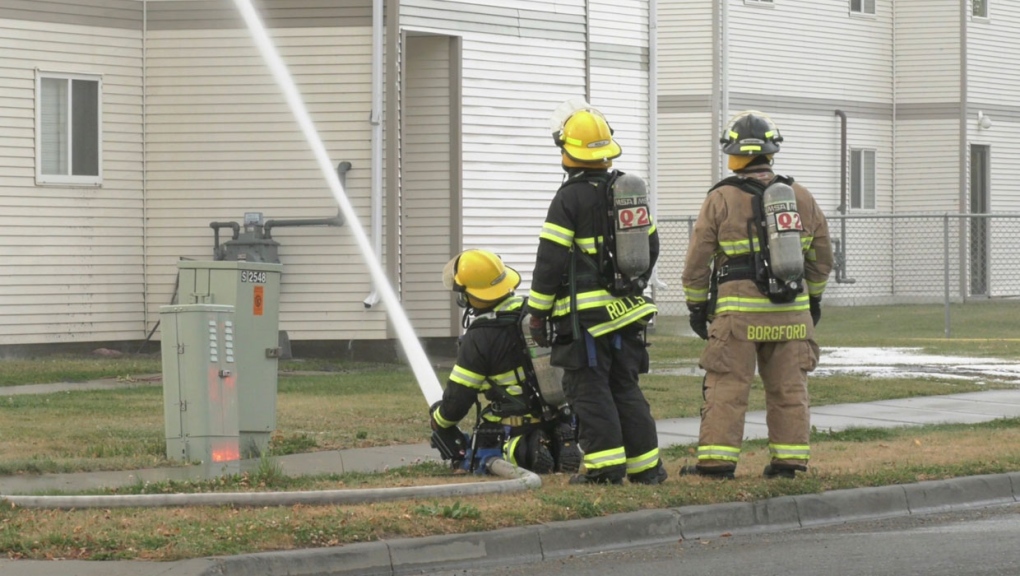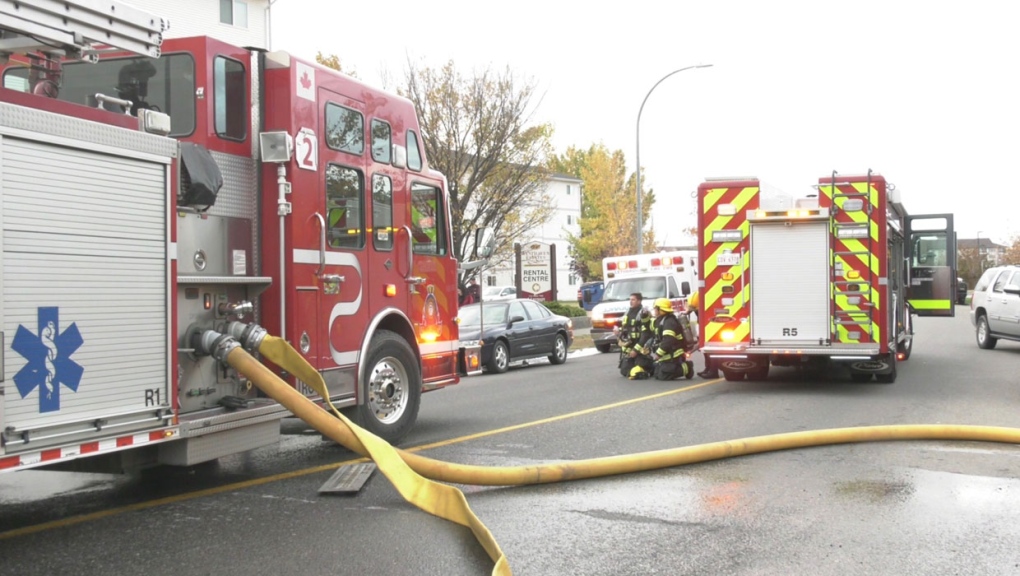Personnel 'not available' for emergencies in Lethbridge, authorities say
 Lethbridge's fire chief says emergency response in the city is being affected by a severe lack of staffing.
Lethbridge's fire chief says emergency response in the city is being affected by a severe lack of staffing.
The head of Lethbridge’s Fire and Emergency Services was direct at Thursday’s community safety standing policy committee meeting, outlining staffing struggles currently facing the department.
Chief Greg Adair stated the adequate standard of service isn't being provided.
“The challenges, basically, are that ambulance staff is not available to aid in fire and rescue operations,” he said.
Adair said the city’s emergency response is suffering because they don't have enough staff and he had the numbers to prove it.
During the presentation, Adair said since 2015, the department has seen a 20 per cent increase in long distance transfers, with resources being tied up outside of the city for up to eight hours. Data also showed a 58 per cent increase in crews responding to emergencies outside of Lethbridge and a 47 per cent increase in call volumes.
According to the Health Sciences Association of Alberta (HSAA), the union that represents the province’s first responders, Lethbridge isn't the only city facing these challenges.
“Medicine Hat faces the exact same issue, Calgary and Edmonton face the exact same issue, Peace River and Grande Prairie – same issue. We have no added paramedics to the system, we have only added a 60 to 70 per cent, depending on who you ask, workload on a system that is already under pressure,” said Mike Parker, president of the HSAA.
The HSAA believes the staffing struggles aren’t a response to centralized dispatch, rather a shortage of employees and communication centre operators across the province.

To address the struggles facing Lethbridge’s department, Adair presented the committee with four options, including a new parallel service to ensure a quick and effective response time for fire crews, which council voted to go ahead with.
The parallel service would continue with firefighters being cross-trained for both fire and EMS, but when arriving at a call they would act as either a firefighter or paramedic – not both.
“If we move to the parallel service and that same scenario we talk about, the ambulance that is on the fire scene is only there for medical aid, they wouldn't be there to aid in the fire suppression,” said Adair.
Adair has recommended hiring eight new firefighters to increase service response, which is expected to cost about $885,000. He says the department should be able to find efficiencies within its operating budget to offset the increased staffing costs and not impact taxes for residents.
The HSAA said that's a move forward, but more needs to be done at a provincial level.
“It helps those that we currently have, move the ones (paramedics) we already have onto trucks, in full-time positions and let's work on recruiting into the future, that's what needs to happen today,” said Parker.
The recommendation will now go before city council for a final decision.
CTVNews.ca Top Stories

LIVE UPDATES Health insurance CEO's wife says threats received prior to fatal shooting
The masked gunman who stalked and killed UnitedHealthcare CEO Brian Thompson used ammunition emblazoned with the words 'deny,' 'defend' and 'depose,' a law enforcement official said Thursday. Here's the latest.
Man wanted for military desertion turns himself in at Canada-U.S. border
A man wanted for deserting the U.S. military 16 years ago was arrested at the border in Buffalo, N.Y. earlier this week.
'At the dawn of a third nuclear age,' senior U.K. commander warns
The head of Britain’s armed forces has warned that the world stands at the cusp of a 'third nuclear age,' defined by multiple simultaneous challenges and weakened safeguards that kept previous threats in check.
No tsunami threat to B.C. after powerful earthquake off California
Emergency management officials say there is no tsunami threat to British Columbia after a powerful 7.0-magnitude earthquake struck off California on Thursday morning.
AI modelling predicts these foods will be hit hardest by inflation next year
The new year won’t bring a resolution to rising food costs, according to a new report that predicts prices to rise as much as five per cent in 2025.
Alleged Alberta Bitcoin extortionist, arsonist arrested
Authorities have arrested Finbar Hughes, a man wanted in connection with alleged plots in Calgary and Edmonton that threatened to burn victims' homes if they did not pay him Bitcoin ransoms.
Earthquake strikes off California; tsunami warning issued
The U.S. National Weather Service has issued a tsunami warning for parts of California and Oregon after a 7.0 magnitude earthquake hit the U.S. Pacific coast on Thursday.
Pete Davidson, Jason Sudeikis and other former 'SNL' cast members reveal how little they got paid
Live from New York, it’s revelations about paydays on 'Saturday Night Live.'
Congo government says it's 'on alert' over mystery flu-like disease that killed dozens
Congo’s health minister said Thursday the government is on alert over a mystery flu-like disease that in recent weeks killed dozens of people.

































